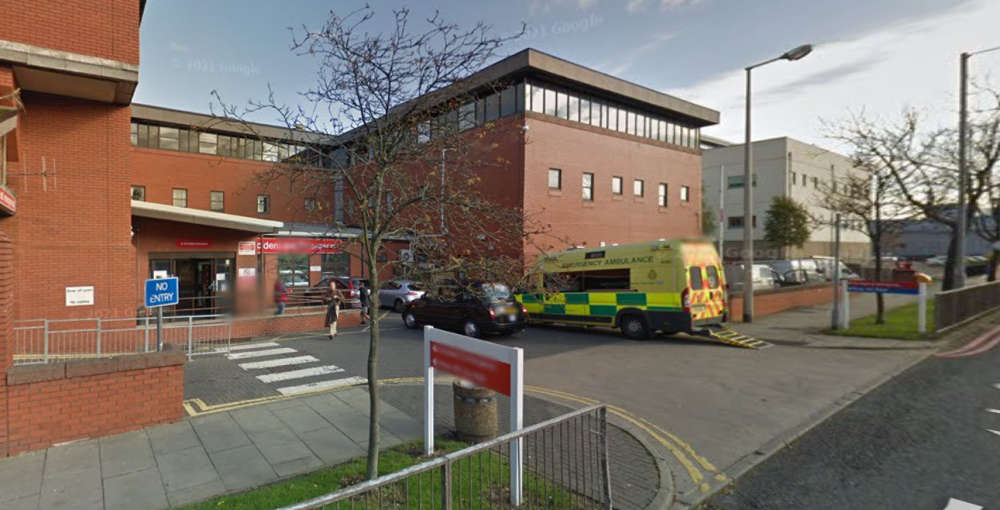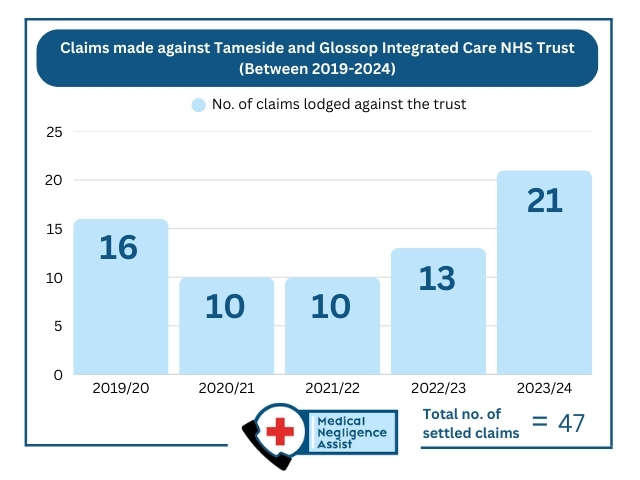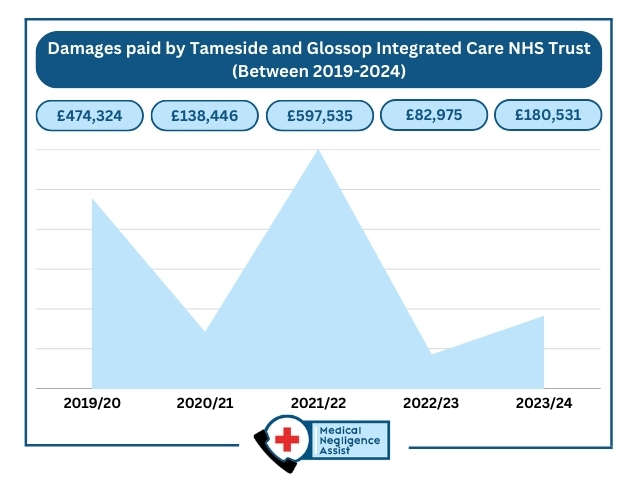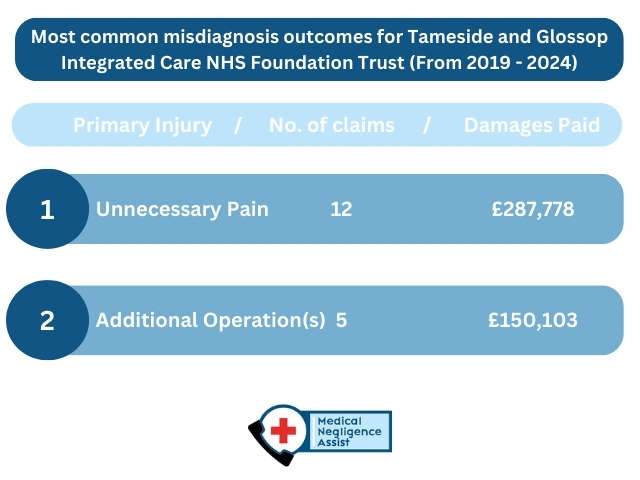
The claims involve unnecessary pain and operations from patients being incorrectly diagnosed.
Figures obtained by Medical Negligence Assist found that, since 2019, Tameside and Glossop Integrated Care NHS Foundation Trust has had to pay out over £1m to patients who have lodged claims following a misdiagnosis.
Gareth Lloyd, medical negligence solicitor for JF Law (which owns the Medical Negligence Assist brand), said: “Misdiagnosis is an all-embracing clinical negligence case type and covers a wide range of clinical situations from the simple diagnosis of a fracture to potentially fatal cancer diagnoses.
“These cases can be a matter of life and death, and whether someone lives or dies will be determined by the success of the diagnosis.”
With an overstretched NHS, increasing patient numbers, and mounting pressures on staff, misdiagnoses are becoming alarmingly common.
When healthcare professionals fail to diagnose an illness or injury correctly, patients can endure painful and potentially fatal consequences due to not receiving the right medical care and treatment.
Tameside and Glossop Integrated Care NHS Foundation Trust is an integrated foundation Trust that operates from Tameside General Hospital situated in Ashton-under-Lyne.
From 2019 to 2024, 70 claims regarding misdiagnoses were lodged against the Tameside and Glossop Integrated Care NHS Foundation Trust, 47 of which were settled.
The second-highest number of claims came in 2019/20, when 16 claims were made against the Trust, a year later, this number decreased to 10 claims.
The service has seen the number of claims rise over the past year compared to 2022/23, with a total of 21.

Image credit: Medical Negligence Assist
The reasons for misdiagnosis naturally vary from case to case, but NHS Resolution highlights two consistent failings across England, one of which is diagnostic errors, particularly early incorrect diagnoses of soft-tissue injuries.
The second is issues with requests for imaging, reporting, interpretation, and follow-up, including failure to complete further imaging, such as CT or MRI, as indicated in national guidance.
In 2023, the British Medical Journal (BMJ) conducted a study which found that around 1 in 18 patients in primary and secondary care are affected by misdiagnosis.
Medical Negligence Assist obtained figures on how much the Tameside and Glossop Integrated Care NHS Foundation Trust has paid out to misdiagnosis claims since 2019.
Over the past five years, the trust has paid out a total of £1,473,811, with the highest amount coming in 2021/22, standing at £597,535.

Image credit: Medical Negligence Assist
The government department also revealed the most common injuries and outcomes that resulted from misdiagnosis claims against the Tameside and Glossop Integrated Care NHS Foundation Trust.
The most common outcome for misdiagnosis claims was unnecessary pain, which was lodged 12 times, with the trust paying £287,778 in compensation, followed by additional operations, which saw 5 claims submitted.

Image credit: Medical Negligence Assist
Speaking to Medical Negligence Assist, Gareth Lloyd said: “Misdiagnosis can have a huge impact on people’s lives. A common case of misdiagnosis is a scaphoid fracture, where typically someone uses their hands to break a fall.
“I’ve had a specific case in the past whereby a man in his early twenties suffered a fractured scaphoid that was initially diagnosed as a sprained wrist.
“As it went undiagnosed for a number of months, the client ended up having a fixation of his wrist, resulting in him not being able to use the hand and, as a consequence, has not been able to continue with his job.”
Medical Negligence Assist offers support to patients who may have suffered harm as a result of a misdiagnosis and can see if they have grounds to submit a claim.
They operate a 24-hour helpline and claim online form, which you can access on their website at https://www.medicalnegligenceassist.co.uk/misdiagnosis-negligence-compensation-claim


 Extra trains running for racegoers to the Grand National
Extra trains running for racegoers to the Grand National
 Bag a Vivienne Westwood
Bag a Vivienne Westwood
 Glossop mum gears up for Boston
Glossop mum gears up for Boston
 Cup delight for Glossop
Cup delight for Glossop

